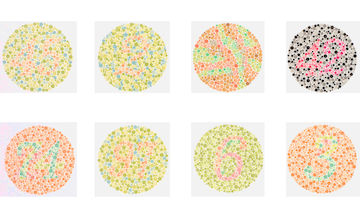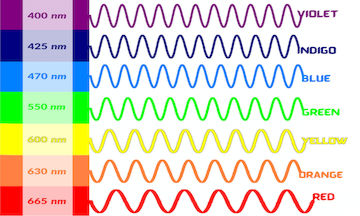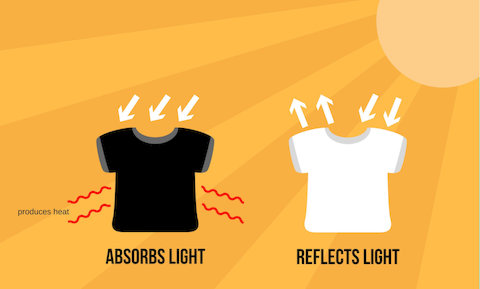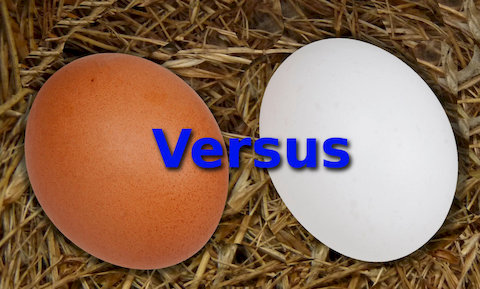Color Perception: Is my red the same as your red?
Is my red, the same as your red? Is the way I see the color red, the same way You see red? Our color's perception may differ from person to person. It might be that my red, is actually your blue but you know it as red as you were taught!
We all perceive colors through cells found in our eyes composed of a hundred million photoreceptors called rods and cones. But it's our brain which interprets light, colors and form, so there might be no way to know if we see the same colors. Or, is there a way?
Today, we speak about the science behind colors and, how we see them.
How do the eyes see
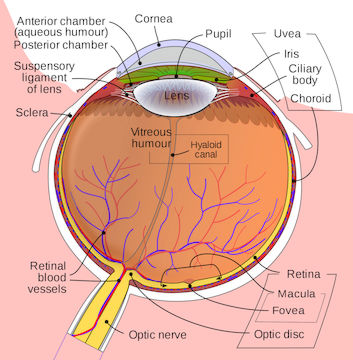 The eyes are one of our primary sensory organs that allows us to see. Eyes collect light from the surroundings and process the information, like what is red, blue, etc..., then send it to our brain.
The eyes are one of our primary sensory organs that allows us to see. Eyes collect light from the surroundings and process the information, like what is red, blue, etc..., then send it to our brain.
For example, our surroundings reflect sunlight to our eyes. The amount of light that goes to our eyes get filtered by the iris. After passing the iris, it goes through the crystalline lens inside the eyes and focuses on the retina.
On the retina are particular photoreceptor cells called rods and cones.
Rods work on the shades of colors, size, and shape. It helps you see in darker places.
Cones work on the perception of colors and details. They functions on detecting the different shades of red, green, and blue.
In the end, the retina converts the light as information and sends it, via our optical nerve, to the brain which will create the image.
Simply put, it is not the eyes that make the picture but the brain.
Color Perception
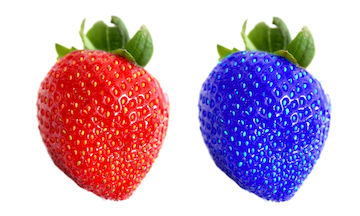 Color perception is the capacity of your eyes to receive information from the light. But the colors we see might not be consistent with what others people see. The red that you see in a strawberry might look like blue to some one else, but that person calls it red.
Color perception is the capacity of your eyes to receive information from the light. But the colors we see might not be consistent with what others people see. The red that you see in a strawberry might look like blue to some one else, but that person calls it red.
The concept of color perception came from different theories. One leading theory is from Thomas Young and Hermann von Helmholtz, it's called the trichromatic theory. This theory stipulates that our color perception depends on the level of use of the primary cones of our eyes.
For example, if our red and green cones are activated, we see the color yellow.
Another leading idea is the Opponent Process Theory. This theory stipulates that we never see some color combinations like red and green. It is because the responses of these colors are opposing in our brain.
For example, red creates a positive response in our neurons, while green creates a negative reaction. This is why an afterimage remains in our vision after staring at an object for a while.
Color constancy and size constancy
 Color Constancy is a mental process that allows our eyes to perceive the same color or shading, even when there is a change in the brightness, or when a colored light is the source (e.g. color of a bulb which make pictures yellowish or blueish). It's one of the many aspects of subjective constancy that shows how our brain was trained from our youth, to identify objects in a consistent way.
Color Constancy is a mental process that allows our eyes to perceive the same color or shading, even when there is a change in the brightness, or when a colored light is the source (e.g. color of a bulb which make pictures yellowish or blueish). It's one of the many aspects of subjective constancy that shows how our brain was trained from our youth, to identify objects in a consistent way.
We are doing color constancy to identify objects. For example, when you are in a room with low-light, you can differentiate objects because of your familiarity with the color of the objects. Through years, our brain has become accustomed to process light informations, shaping our color constancy.
In a nutshell, color constancy affects our color perception because of our mental process. And this, even under shades and different types of lighting, our brain maintain constantly the difference between colors.
Qualia and example of a quale
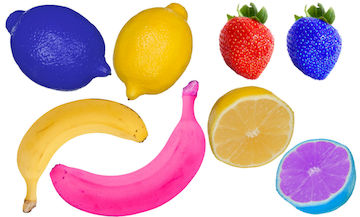 If you never heard about this word, you need to know that quale is the singular form of qualia.
If you never heard about this word, you need to know that quale is the singular form of qualia.
So what is qualia? There are many definitions of qualia, and one of the simpliest definition could be the way we feel to have pain, seeing red, smelling a rose, etc.
For example, we do know that pain is a stimuly transmitted via our nerves to our brain which in return interprets this particular stimuly as pain. We also know that we do feel pain differently from one person to another person as people's brain have different experience about what is painful or painless. An example of a quale could be a cook that will not feel the heat or the burn reflex, as you feel when holding a hot frying pan because a cook has to use to hold very hot frying pan all the day.
So, knowing that light is transmitted from our eyes to our brain via a nerve, is my red the same as your red?
Color Perception Researches and References
The weird colored fruits used for this article are from Patrice Laborda as well as the pictures at sunset and underwater, all other schematics and pictures are from Wikimedia Commons.
If you want to know more about Color Perception, take a look at some of our references below.
- Qualia
- Wikipedia Qualia
- color perception
- 47 colours of light
- trichromatic color vision
- opponent process of color vision
- colour constancy
- Wikipedia color vision
- Wikipedia Color constancy
- Visual System
Speaking about color perception, do you know why is the sky blue?
Last, but not Least
If you would like to receive interesting content like this in your email Inbox, subscribe to our newsletter.
In addition to our monthly newsletter, we will send you our weekly e-Bulletin with one fascinating topic, like today. There will be no advertising or sales pitch.
We also want to thank YouTube for the amazing videos on this page.
Thanks for reading, and if you wish, see you next week!
The Research and Media Team at Scotty's.
Disclaimer:
The views, ideas, and opinions expressed by the writers of Scotty's Media team do not necessarily reflect or represent the views, ideas, and opinions of the company, Scotty's Action Sports Network, Inc.
More Pictures of Color Perception





